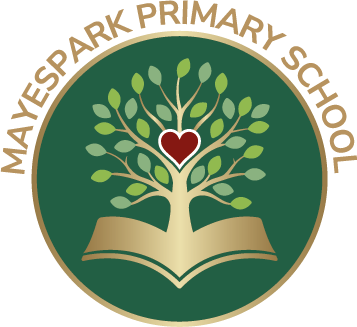English
At Mayespark Primary School we strive to give children the necessary tools to be able to communicate effectively and creatively, through spoken and written language.
We encourage children to develop a love of reading by using quality texts and topics which inspire and excite young readers and writers.
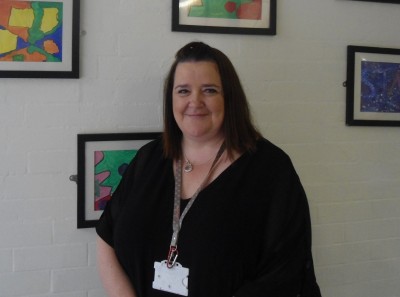
Mrs Amey - English Lead
Reading
At Mayespark we aim for all our children to become fluent, confident readers who are passionate about reading.
Children who read regularly and who are read to regularly have the opportunity to open the doors to so many different worlds! More importantly, reading gives children the tools to become independent life-long learners.
In partnership with parents and carers, this is achieved through:
- Read Write Inc, a program to help children read at school
- Destination Reader, a skills-based approach to daily reading lessons once children have completed Read Write Inc.
- Encouraging children to develop a love of books by reading to them daily, at home and at school
- Giving children access to a wide range of books at school and at home
At Mayespark Primary School we use Read Write Inc Phonics (RWI) to give children the best possible start with their literacy.
A guide to RWI
Miss Nour is our phonics lead teacher, if parents have any questions about phonics, they are able to contact her directly. The following information provides valuable insight into how children’s reading can be supported at home.
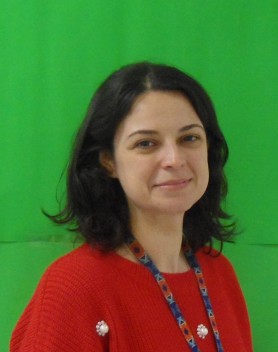
Miss Nour - RWI Leader
What is Read Write Inc?
Read Write Inc (RWI) is a phonics complete literacy programme which helps all children learn to read fluently and at speed so they can focus on developing their skills in comprehension, vocabulary and spelling. The programme is designed for children aged 4-7. However, at Mayespark Primary School we begin the programme in Nursery and will continue teaching RWI to children beyond the age of 7, where needed.
RWI was developed by Ruth Miskin and more information on this can be found at:
https://www.youtube.com/watch?v=sjlPILhk7bQ
How will RWI be taught?
All children are assessed regularly by our RWI lead teacher. This enables us to group children at the same level, facilitating complete participation in lessons from all children.
- Nursery - When appropriate, children will be introduced to the initial sounds in short five minutes sessions.
- Reception - In Reception all children will learn how to ‘read’ the sounds in words and how these can be written down.
Reading
The children:
- learn 44 sounds and the corresponding letters/letter groups using simple picture prompts – see below
- learn to read words using ‘Fred talk’ and sound blending
- read from a range of storybooks and non-fictions books matched to their phonic knowledge
- work well with partners
- develop comprehension skills in stories by answering 'Find It' and 'Prove It' discussion questions
Writing
The children:
- learn to write and form the letters/letter groups which represent the 44 sounds with the help of fun rhymes
- learn to write words by using ‘Fred talk’
- learn to build sentences by practising sentences out loud before they write
Talking
The children work in pairs so that they:
- answer every question
- practise every activity with their partner
- take turns in talking and reading to each other
- develop ambitious vocabulary
Year One & Year Two
Children follow the same format as Reception but will work on complex sounds and read books appropriate to their reading level.
Children will be taught how to read as follows:
Before you start to teach your child, practise saying the sounds below. These are the sounds we use to speak in English.
The children are taught the sounds in 3 sets.
As children follow the RWI process of learning to read, they work through these steps:
Step 1
Set 1 Sounds are taught in the following order together with rhymes to help children form the letters correctly and instantly recognise sounds ready for blending. Please note, letter names are not taught at this early stage.
|
Set 1 |
|
|
Sound |
Rhyme |
|
m |
Down Maisie then over the two mountains. Maisie, mountain, mountain |
|
a |
Round the apple, down the leaf |
|
s |
Slide around the snake |
|
d |
Round the dinosaur's back, up his neck and down to his feet |
|
t |
Down the tower, across the tower |
|
i |
Down the insects body, dot for the head |
|
n |
Down Nobby and over the net |
|
p |
Down the plait, up and over the pirate’s face |
|
g |
Round the girl’s face, down her hair and give her a curl |
|
o |
All around the orange |
|
c |
Curl around the caterpillar |
|
k |
Down the kangaroo’s body, tail and leg |
|
u |
Down and under the umbrella, up to the top and down to the puddle |
|
b |
Down the laces, over the toe and touch the heel |
|
f |
Down the stem and draw the leaves |
|
e |
Slice into the egg, go over the top, then under the egg |
|
l |
Down the long leg |
|
h |
Down the horse's head to the hooves and over his back |
|
sh |
Slither down the snake, then down the horse's head to the hooves and over his back |
|
r |
Down the robot's back, then up and curl |
|
j |
Down his body, curl and dot |
|
v |
Down a wing, up a wing |
|
y |
Down a horn, up a horn and under the yak's head |
|
w |
Down, up, down, up the worm |
|
th |
Down the tower, across the tower, then down the horse’s head to the hooves and over his back |
|
z |
Zig-zag-zig, down the zip |
|
ch |
Curl around the caterpillar, then down the horse's head to the hooves and over his back |
|
qu |
Round the queen’s head, up to her crown, down her hair and curl |
|
x |
Cross down the arm and leg and cross the other way |
|
ng |
A thing on a string |
|
nk |
I think I stink |
|
kn |
knock, knock who’s there? |
|
ck |
tick tock clock |
|
wh |
whisk whisk |
|
ph |
take a photo |
Children will also use pictures for each sound to help recognise the sound and then form the shape of the sound.
Letter Formation
It is crucial for children to learn how to write letters using the correct formation. When children first learn their letters in Reception, they are taught how to correctly form each letter using a simple rhyme. The following videos go through each rhyme in the order children are taught each letter. We encourage parents to regularly practise letter formation at home.
m, a, s, d, t
i, n, p, g, o
c, k, u, b
f, e, l, h, r
j, v, y, w
z, q, x
Fred Talk
As the children are learning the set 1 sounds we teach them how to blend. To aid this process, we use pure sounds (for example, we use ‘m’ not ‘muh’ and ’s’ not ‘suh’). At school, we introduce children to a puppet called Fred who is an expert on sounding out words for the children to blend together, this is referred to as ‘Fred Talk’. Here are a few examples of Fred Talk: m-o-p/ mop, c-a-t/cat, m-a-n/man, sh-o-p/shop, b-l-a-ck/black.
The following video is an example of blending sounds with Fred.
Nonsense words (Alien words)
As well as learning to read and blend real words children will have plenty of opportunities to apply their sound recognition skills on reading ‘Nonsense words’. These words will also feature heavily in the Year One Phonics Screening check in the summer term. Nonsense words are made up of different sounds but they are not real words. For example, clob, moop, slair
Step 2
Step 2 involves teaching children Set 2 Sounds - the long vowels. When they are very confident with all of set 1 and 2 they are then taught Set 3 Sounds. Set 3 comprises of additional ways we can write long vowel sounds. Each sound has a short rhyme, as follows:
|
Long vowel sound |
Set 2 Speed Sound cards |
Set 3 Speed Sound cards |
|
|
|
ay |
ay: may I play |
a-e: make a cake |
ai: snail in the rain |
|
|
ee |
ee: what can you see |
ea: cup of tea |
e: he me we she be |
e-e: go Pete and Steve |
|
igh |
igh: fly high |
i-e: nice smile |
ie: terrible tie |
|
|
ow |
ow: blow the snow |
o-e: phone home |
ao: goat in a boat |
|
|
oo |
oo: poo at the zoo |
u-e: huge brute |
ew: chew the stew |
ue: come to the rescue |
|
oo |
oo: look at a book |
|
|
|
|
ar |
ar: start the car |
|
|
|
|
or |
or: shut the door |
aw: yawn at dawn |
au: Paul the astronaut |
|
|
air |
air: that’s not fair |
are: share and care |
|
|
|
ir |
ir: whirl and twirl |
ur: nurse for a purse |
er: a better letter |
|
|
ou |
ou: shout it out |
ow: brown cow |
|
|
|
oy |
oy: toy for a boy |
oi: spoil the boy |
|
|
|
ire |
|
ire: fire fire! |
|
|
|
ear |
|
ear: hear with your ear |
|
|
|
ure |
|
ure: sure it’s pure? |
|
|
Step 3
Children will be introduced to ‘Ditty books’ when they successfully begin to read single words.
Children use sound-blending (Fred Talk) to read short ditties. These books are taken home once they have been read and discussed in class.
Within all ditty books children will have red and green words to learn to help them to become speedy readers. Red words are words which are not easily decodable. In addition, there are challenge words to extend children’s vocabulary. Green words are linked to the sounds they have been learning and are easily decodable.
Example of red words:
Example of green words:
Dots and dashes represent the sound each letter makes.
During RWI sessions, children will read the book three times, allowing plenty of opportunities to practise using their developing comprehension skills.
Spelling
Children will use ‘Fred fingers’ to first sound out a word before they write it down. This way of teaching spelling allows children to use Fred fingers whenever they get stuck with spelling a word. Children pinch each sound on their fingers before writing the word.
Order of Story books:
Children will read decodable books reflecting their sound knowledge. The expectation is that all children will leave Year One as confident speedy readers, ready to take on the challenges of Year Two.
Please click on the following link for more information regarding supporting children’s phonics at home.
https://www.ruthmiskin.com/en/find-out-more/parents/
Destination Reader
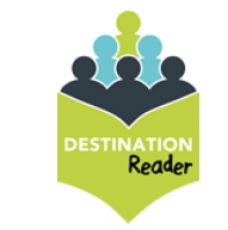
At Mayespark Primary School, Destination Reader is taught from Year 3-6. Children in Year 2 who have completed the Read Write Inc Programme will move onto an adapted version of Destination Reader.
Destination Reader:
- Provides a systematic approach to the teaching of reading across KS2
- Enables children to develop key strategies which deepen their understanding of texts
- Develops children’s motivation to read broadly for pleasure and purpose
- Increases children’s ability to lead their learning through the acquisition of key learning behaviours
- Places children at the centre of a formative approach to assessment in reading
The programme covers seven key skills, identified within the National Curriculum, to support the reading and understanding of a wide range of texts. These are:
- Predicting
- Making connections
- Asking questions
- Evaluating
- Inferring
- Summarising
- Clarifying
Destination Reader Text Overview
While children read their book with their partner they are encouraged to stop and have discussions in a respectful way, using sentence stems that are specifically taught. You could prompt your child to refer to these sentence stems when reading at home or answering questions about a book you have read to them.
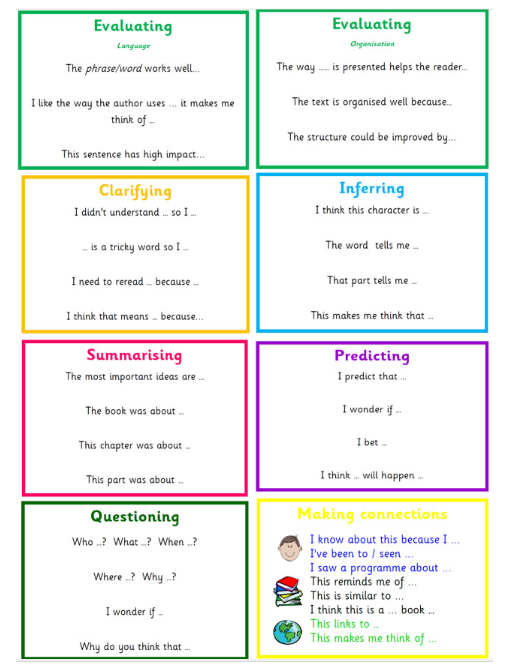
Reading at home
School, however, is not the only place in which our children should be encouraged to read. We have had a long commitment to reading records across the school and ask that these are completed daily at home.
At Mayespark we have clear expectations regarding how frequently and how long children need to read for at home. These are set out below for each phase.
|
EYFS Reading at home |
|
|
Reading to your child |
Read different books to your child at least six days a week for at least 15 minutes. |
|
Hearing your child read |
Listen to your child read at least six days a week. Talk about what they have read referring to the questions in your child’s reading record. |
|
Signing your child’s reading record |
Sign and date your child’s reading record each day with the book they have read to you. |
|
Changing books |
School books will be changed at least weekly and a school adult will sign your child’s reading record weekly. |
|
Year 1 and 2 Reading at home |
|
|
Reading to your child |
Read different books to your child at least six days a week for at least 15 minutes. |
|
Hearing your child read |
Listen to your child read at least six days a week. Talk about what they have read referring to the questions in your child’s reading record. |
|
Signing your child’s reading record |
Sign and date your child’s reading record each day with the book they have read to you. |
|
Changing books |
School books will be changed at least weekly and a school adult will sign your child’s reading record weekly. |
|
Year 3 and 4 Reading at home |
|
|
Reading to your child |
It is still important that parents/carers read to older children. This may involve reading together and talking about non-fiction texts. For example, a newspaper article or an information book about the topic they are interested in. |
|
Hearing your child read |
Children are to read at least six days a week for at least 20 – 30 minutes a day. Once your child has been told by their teacher they are an ‘Independent Reader’, they may prefer to read their reading book on their own. |
|
Signing your child’s reading record |
Sign and date your child’s reading record each day they have read. Independent readers can record in their reading record themselves and parents are expected to sign it once a week. |
|
Changing books |
Children can change their reading book whenever they need to. Class teachers will check reading records daily and will sign/ comment in your child’s reading record once every three weeks. |
|
Year 5 and 6 Reading at home |
|
|
Reading to your child |
It is still important that parents/carers read to older children. This may involve reading together and talking about non-fiction texts. For example, a newspaper article or an information book about the topic they are interested in. |
|
Hearing your child read |
Children are to read at least six days a week for at least 30 minutes a day. Once your child has been told by their teacher they are an ‘Independent Reader’, they may prefer to read their reading book on their own. |
|
Signing your child’s reading record |
Sign and date your child’s reading record each day they have read. Independent readers can record in their reading record themselves and parents are expected to sign it once a week. |
|
Changing books |
Children can change their reading book whenever they need to. Class teachers will check reading records daily and will sign/ comment in your child’s reading record once every three weeks. |
Recommended reading lists
There is such an extensive range of wonderful children’s books, sometimes it can be difficult to know which ones to read. To help parents, we have produced recommended reading lists which includes text ranging from beloved childhood classics to fantastic fantasies. Children will not necessarily bring every book on these lists home from school and books can be expensive to purchase. We therefore suggest parents visit their local library to borrow the books. It is also often possible to order books which they do not have. Using the following recommended reading lists will help to inspire children’s love of reading.
Writing
At Mayespark, we aim to create confident writers who develop stamina for writing throughout their time in our school. We want all of our children to become independent writers, and strive towards this by ensuring children are immersed in high quality texts, exposed to a range of genres and have a clear understanding of purpose and audience. Our learners are taught to consider the intended impact of writing skills/tools and the ability to select vocabulary with careful attention to the desired affect on the readers’ thoughts and feelings. We challenge and encourage children to take risks and view mistakes as another part of the learning process. Children set high expectations for themselves where they take pride in all aspects of learning and in everything they produce. Rich texts are at the heart of our teaching and a love for reading is promoted throughout the school.
How we teach writing 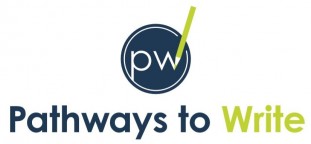
We follow a Mastery approach to English through the programme ‘Pathways to Write.’ Units of work are delivered using high quality texts and children in all year groups are given varied opportunities for writing. Skills are built up through repetition within the units, and children apply these skills in the writing activities provided. Many opportunities for widening children’s vocabulary are given through the Pathways to Write approach and this builds on the extensive work we do in school to provide our children with a rich and varied vocabulary.
Pathways ensures coverage and progression through the National Curriculum:
- Mastery of vocabulary, grammar and punctuation skills
- Writing a range of genres across a year
- Vocabulary development
- Using a wider range of reading comprehension strategies as a whole class
- Spoken language activities including drama and presentations
- Opportunities for practising previously taught genres
- An extended, independent piece of writing
It builds on the following stages of teaching:
1) Gateway
This is an opportunity to hook the pupils into the context of learning and to assess previously taught mastery skills. A short writing task is set at the end of this session to assess the application of Gateway skills. Where pupils are struggling to apply and use Gateways keys, these are then built into the planning of the unit to ensure more personalised learning.
2) Pathway
In this section, the Mastery skills are introduced with many opportunities along the way to practise and apply these skills in different writing tasks. The tasks use genres that the pupils will be most familiar with such as character or setting descriptions, dialogue, diary entries, instructions, poetry and sentence work, providing a range of on-going evidence for writing assessment.
3) Writeway
This final section of the sequence comprises of at least 4 sessions. It begins with sectioning and sequencing texts using a model, before the children are given the opportunity to write at length, independently. Within the Writeaway, pupils are encouraged to plan, write, check, edit, re-draft and publish as required; with the focus on using and applying the mastery skills they have been taught.
Below you can find an overview of skills that will be covered in each year group for reading, writing and spoken language. We have also included an overview of the texts used in Pathways to Write.
You will find the end of year expectations for writing, reading and spoken language for each of our year groups in the following documents. For further detail on the skills that your children are learning on a termly basis, please refer to our Big Pictures or contact your class teacher.
High Expectations
High expectations are set for children’s written work. School has an agreed set of non-negotiables which children must try to adhere to. These areas are adapted to be specific and appropriate for each year group.
Our five non-negotiables are:
- Presentation
- Handwriting
- Grammar
- Spelling
- Quality/Quantity/Effort
Spelling
Children in Year 1 & 2 are taught spelling through their RWI phonics lessons. In Years 3-6, children have discrete spelling lessons as follows:
Handwriting
At Mayespark we follow the Nelson Handwriting scheme. Below are the overviews for each year group.
